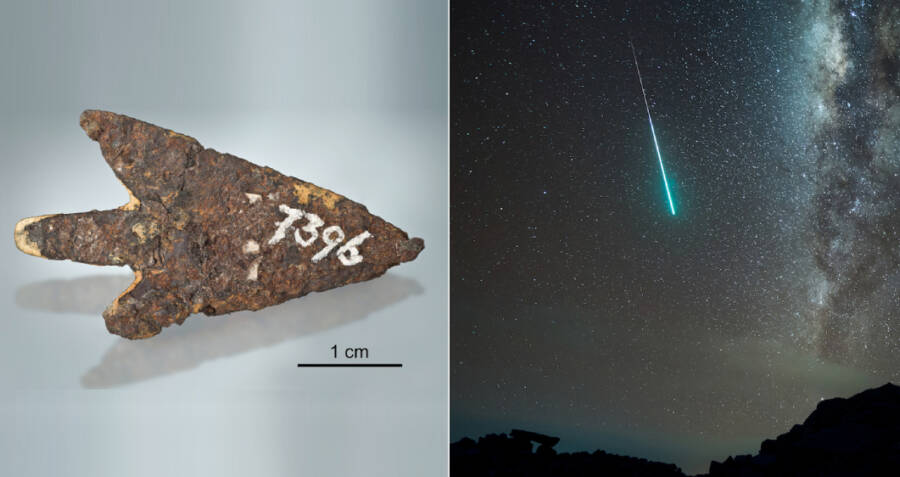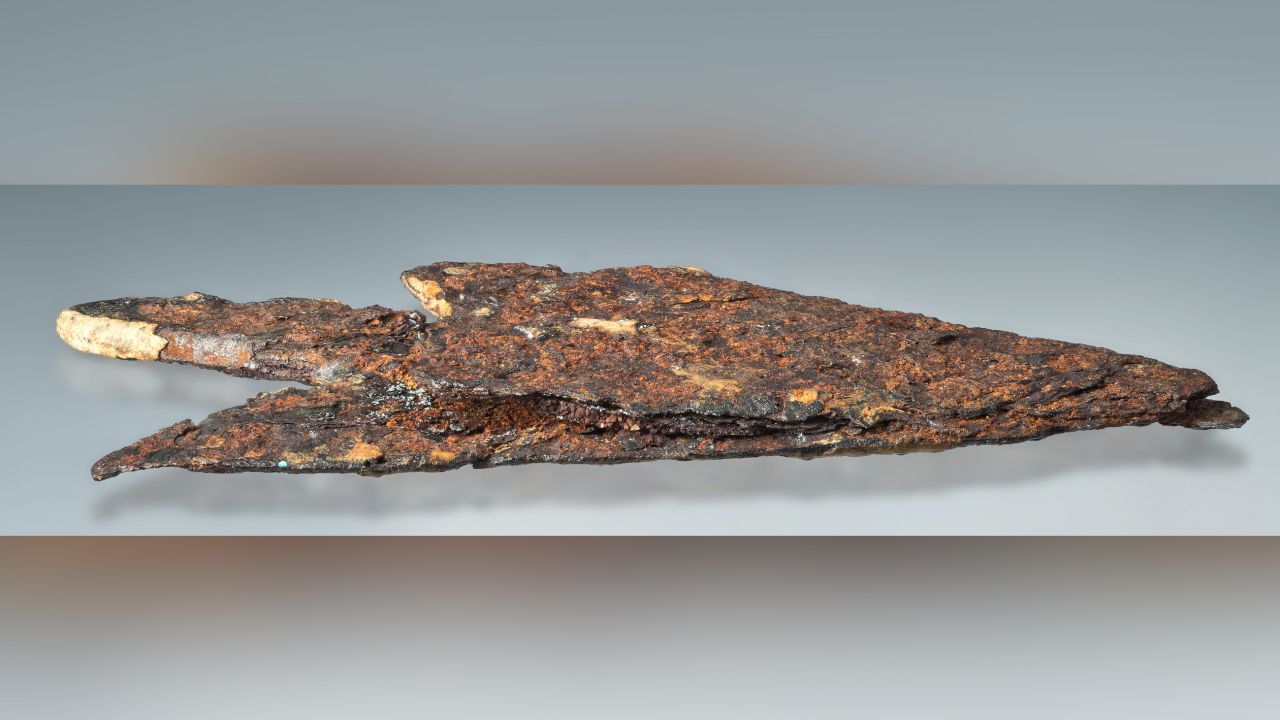Bronze Age Artifacts Unveiled: Iron Arrowhead’s Meteoritic Origins Rewrite Ancient History
Swiss scientists authenticate the 3,000-year-old iron arrowhead’s meteorite origin, shedding light on ancient metallurgical practices and revealing intriguing connections to Bronze Age artifacts through its discovery near a Bronze Age settlement in eastern Switzerland.

Swiss scientists authenticate a 3,000-year-old meteoritic iron arrowhead discovered near a Bronze Age settlement, shedding light on ancient metallurgical practices and the intriguing relationship with Bronze Age artifacts, as the arrowhead’s proximity to the Twannberg meteorite raises questions about shared celestial origins. (PHOTO: All That’s Interesting)
READ ALSO: BOSTON POSTAL CARRIER ROBBED AT GUNPOINT: ASSAILANT STEALS KEY TO USPS COLLECTION BOXES
Bronze Age Artifacts Rewritten: Meteoritic Iron in 3,000-Year-Old Arrowhead Sheds Light on Ancient Metallurgy, Swiss Scientists Confirm
In a captivating discovery that intertwines with the world of Bronze Age artifacts, Swiss scientists have authenticated the composition of a 3,000-year-old arrowhead as iron derived from a meteorite, shedding light on the metallurgical practices of that ancient era. According to Insider, the arrowhead measures 1.5 inches and was unearthed during a 19th-century excavation of a Bronze Age settlement near Mörigen in eastern Switzerland, making it a unique find in the realm of Bronze Age artifacts.
Adding to the allure of the revelation is its close proximity—just two miles—to the remnants of the Twannberg meteorite, the report further stated. This intriguing connection raises the question: Could the iron of the arrowhead have originated from the same celestial body? After meticulous analysis centered around these Bronze Age artifacts, researchers recently made an announcement confirming that the metallic content does indeed trace its roots back to a meteorite. However, it’s not linked to the Twannberg meteorite as initially speculated. Interestingly, the nickel concentration in the arrowhead surpasses that of the local meteorite debris by a factor of two, underlining the uniqueness of these Bronze Age artifacts.
Bronze Age Artifacts’ Enigma: Meteoritic Journey of Iron Arrowhead Across 600 Miles Rewrites Early Human Technological History, Yahoo News Reports”
The prevailing hypothesis charts a fascinating journey for the celestial iron of the arrowhead, spanning nearly 600 miles to a crater-formed lake in Estonia, as reported in Yahoo News. This monumental meteoric impact event occurred around 1500 BCE, squarely within the bounds of the Bronze Age, and gave rise to an assortment of minute fragments. Among these fragments, one potentially embarked on an astonishing journey that eventually brought it to Mörigen. Beda Hofmann, the lead author of the study, emphasizes the well-established practice of trade that characterized Bronze Age Europe, expertly weaving connections between the Baltic amber, akin to the arrowhead, and other diverse materials like tin from Cornwall and glass beads from Egypt and Mesopotamia.
The revelation of these Bronze Age artifacts unveils an extraordinary glimpse into the ingenuity of early human technology, as they employed meteoritic iron long before mastering the extraction of iron from oxide ores, as reported. The scarcity of evidence chronicling such early utilization underscores the exceptional nature of the find, a sentiment echoed by the Natural History Museum of Bern. Remarkably, the annals of discovery hold only a mere 55 ancient meteoritic objects spanning the vast landscapes of Eurasia and Africa. An intriguing subset of these, 19 to be precise, emerged from the storied tomb of King Tutankhamun, seamlessly adding a regal facet to the broader narrative of our distant past. As scientists ardently embark on further explorations to decode this enigma, the arrowhead assumes its position as an unparalleled testament to the enduring allure of Bronze Age artifacts and their mysteries.
READ ALSO: STRENGTHENING US IRAQ RELATIONS: JOINT EFFORTS BEYOND ISIS FIGHT
































